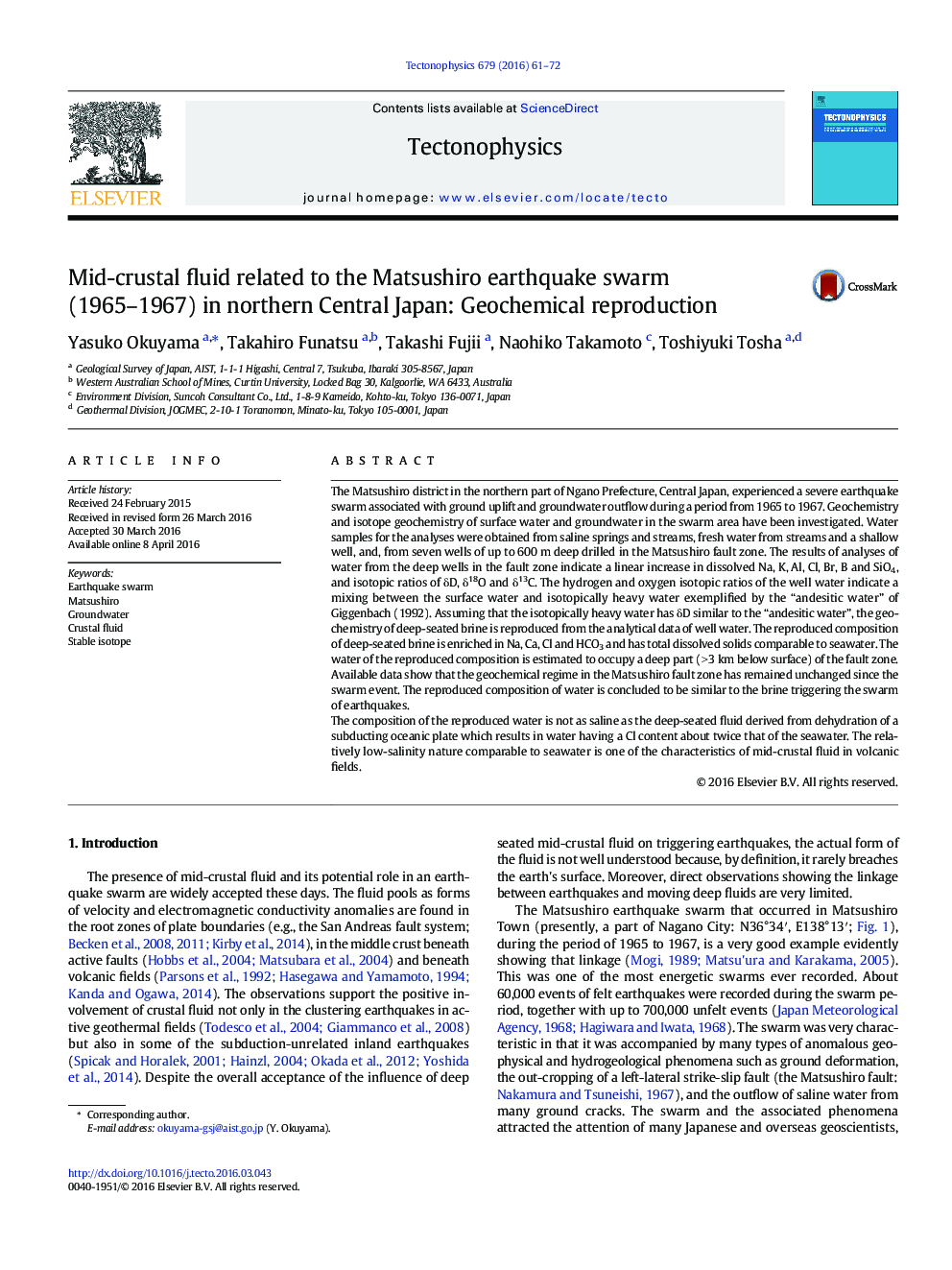| Article ID | Journal | Published Year | Pages | File Type |
|---|---|---|---|---|
| 6433431 | Tectonophysics | 2016 | 12 Pages |
â¢Deep brine invaded into the shallow crust caused the Matsushiro earthquake swarm.â¢The geochemical regime in the fault zone has kept unchanged since the swarm event.â¢The initial brine composition is reproduced based on the andesitic water model.â¢The reproduced water is NaClHCO3-rich and the TDS is comparable to seawater.â¢Low salinity characterizes the mid-crustal fluid in a volcanic field like Matsushiro.
The Matsushiro district in the northern part of Ngano Prefecture, Central Japan, experienced a severe earthquake swarm associated with ground uplift and groundwater outflow during a period from 1965 to 1967. Geochemistry and isotope geochemistry of surface water and groundwater in the swarm area have been investigated. Water samples for the analyses were obtained from saline springs and streams, fresh water from streams and a shallow well, and, from seven wells of up to 600 m deep drilled in the Matsushiro fault zone. The results of analyses of water from the deep wells in the fault zone indicate a linear increase in dissolved Na, K, Al, Cl, Br, B and SiO4, and isotopic ratios of δD, δ18O and δ13C. The hydrogen and oxygen isotopic ratios of the well water indicate a mixing between the surface water and isotopically heavy water exemplified by the “andesitic water” of Giggenbach (1992). Assuming that the isotopically heavy water has δD similar to the “andesitic water”, the geochemistry of deep-seated brine is reproduced from the analytical data of well water. The reproduced composition of deep-seated brine is enriched in Na, Ca, Cl and HCO3 and has total dissolved solids comparable to seawater. The water of the reproduced composition is estimated to occupy a deep part (> 3 km below surface) of the fault zone. Available data show that the geochemical regime in the Matsushiro fault zone has remained unchanged since the swarm event. The reproduced composition of water is concluded to be similar to the brine triggering the swarm of earthquakes.The composition of the reproduced water is not as saline as the deep-seated fluid derived from dehydration of a subducting oceanic plate which results in water having a Cl content about twice that of the seawater. The relatively low-salinity nature comparable to seawater is one of the characteristics of mid-crustal fluid in volcanic fields.
